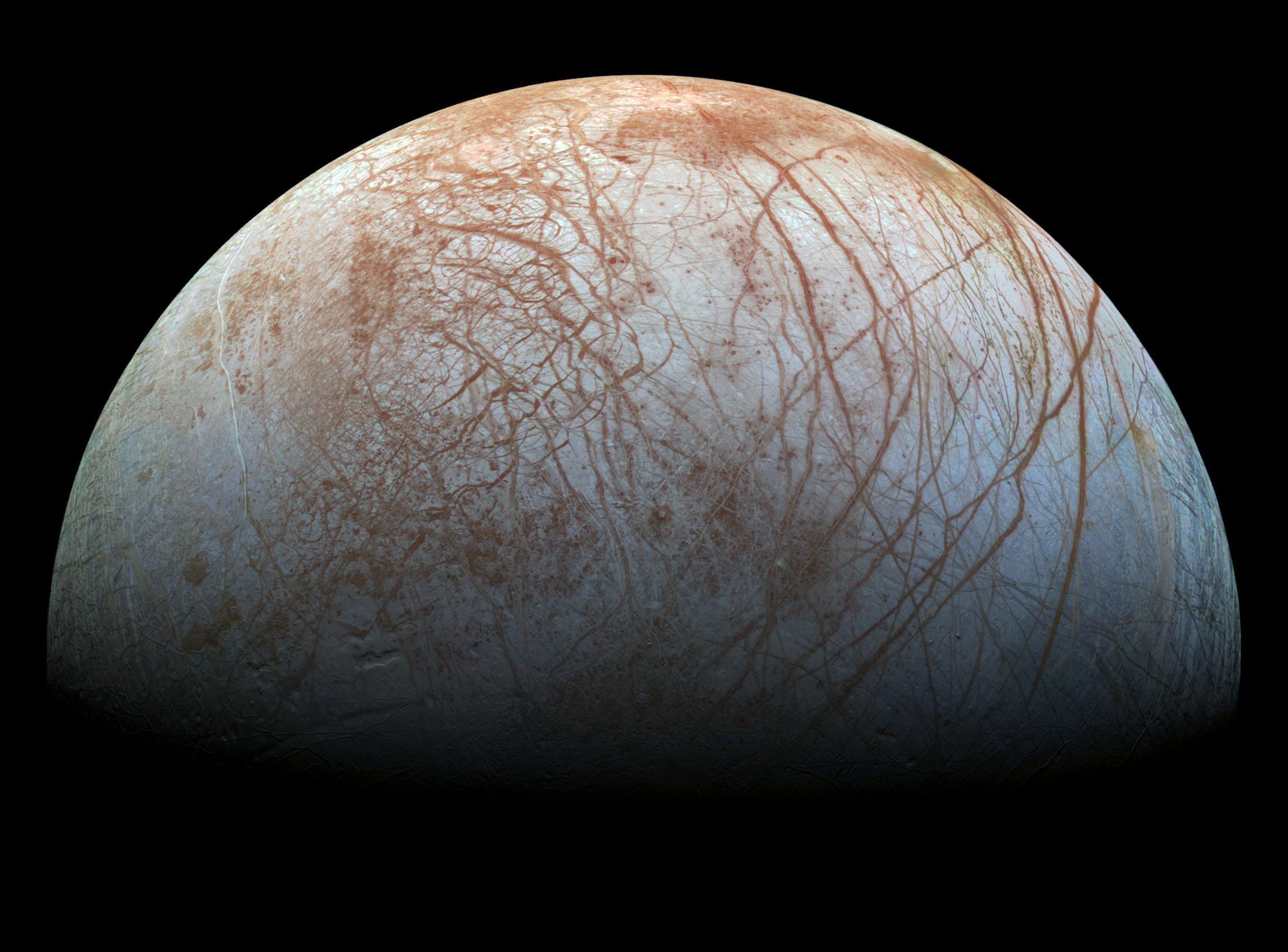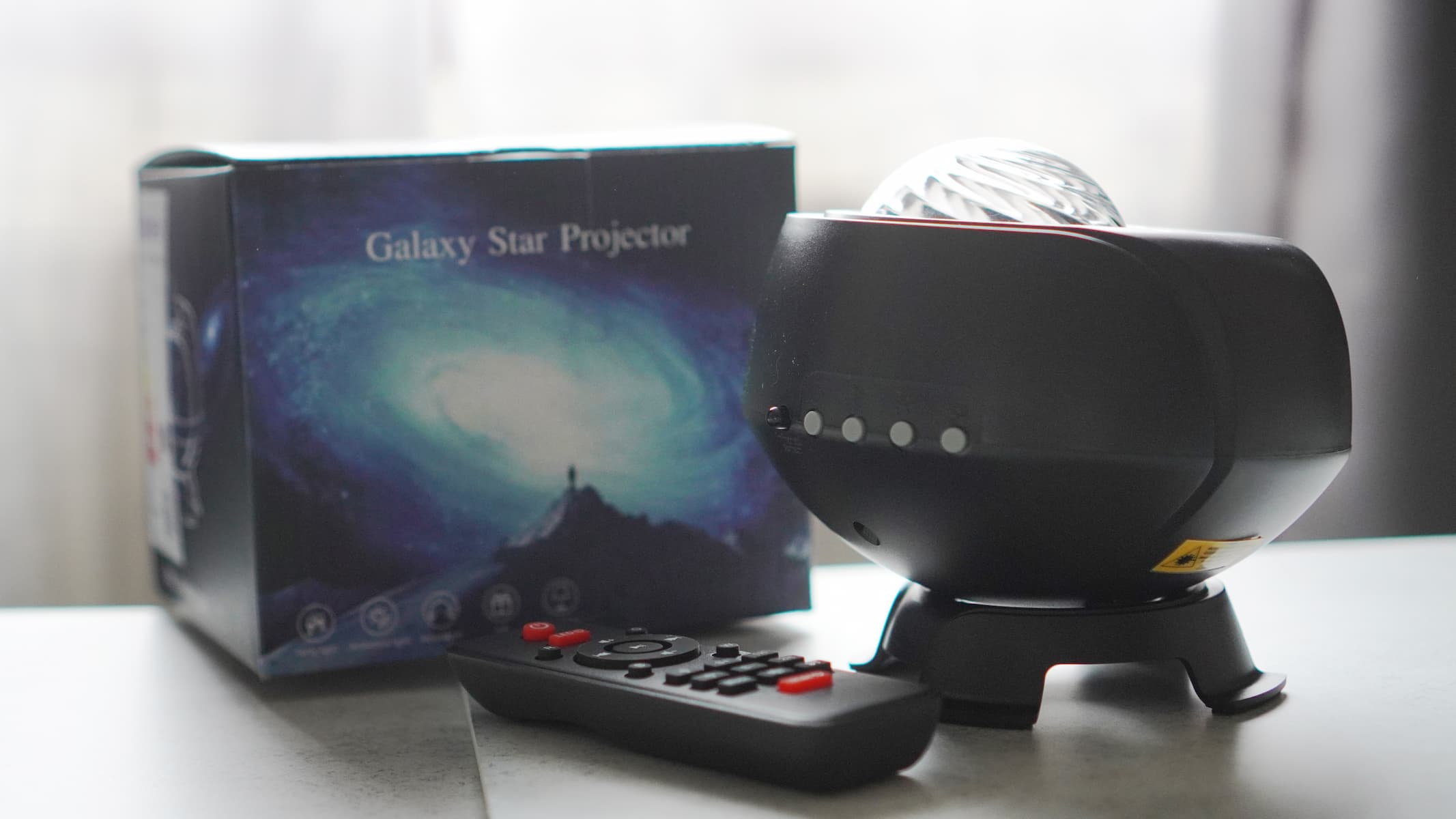
NASA's Hubble Space Telescope has spotted water vapor on Jupiter's ocean moon Europa, potentially revealing new clues about icy satellites in our solar system and beyond.
Hubble had previously detected water vapor on Europa — in apparent plumes that arise sporadically and temporarily extend perhaps 120 miles (200 kilometers) into space from the moon's icy shell, which overlies a huge, buried ocean of liquid water. But this new finding is something quite different.
Lorenz Roth, a researcher at the KTH Royal Institute of Technology in Stockholm, Sweden, analyzed archival ultraviolet observations of Europa that the Hubble Space Telescope made with its Space Telescope Imaging Spectrograph instrument in 1999, 2012, 2014 and 2015.
Related: Photos: Europa, mysterious icy moon of Jupiter
This analysis revealed the existence of significant amounts of water vapor on Europa's trailing hemisphere — the one that faces away from the moon's orbital path around Jupiter. This water vapor persisted over the long haul, unlike the transient plumes, Roth reported in a study that was published last month in the journal Geophysical Research Letters.
Roth and colleagues recently used a similar technique to spot water vapor on fellow Jupiter satellite Ganymede, the largest moon in the solar system.
"The observation of water vapor on Ganymede, and on the trailing side of Europa, advances our understanding of the atmospheres of icy moons," Roth said in a statement. "However, the detection of a stable water abundance on Europa is a bit more surprising than on Ganymede because Europa's surface temperatures are lower than Ganymede's."
Get the Space.com Newsletter
Breaking space news, the latest updates on rocket launches, skywatching events and more!
Europa reflects sunlight more effectively than Ganymede and thus is about 60 degrees Fahrenheit (33 degrees Celsius) cooler than the larger moon, NASA officials said. High temperatures on Europa top out around minus 260 F (minus 160 C), yet a fair amount of ice appears to be sublimating there, transforming into vapor and wafting into space.
Adding to the intrigue is the fact that this water vapor is confined to Europa's trailing hemisphere. It's unclear why this is the case, NASA officials said.
We could get more clarity on these strange findings soon. In October 2024, NASA plans to launch a probe called Europa Clipper, which will arrive in the Jupiter system in April 2030. The spacecraft will perform dozens of close flybys of Europa, studying its ocean and ice shell and perhaps even zooming through a plume, if one happens to be flaring up at the right time.
Clipper will also scout out good landing sites for a life-hunting lander mission, which Congress has ordered NASA to develop (though this latter mission is not officially on NASA's books yet).
Mike Wall is the author of "Out There" (Grand Central Publishing, 2018; illustrated by Karl Tate), a book about the search for alien life. Follow him on Twitter @michaeldwall. Follow us on Twitter @Spacedotcom or Facebook.
Join our Space Forums to keep talking space on the latest missions, night sky and more! And if you have a news tip, correction or comment, let us know at: community@space.com.

Michael Wall is a Senior Space Writer with Space.com and joined the team in 2010. He primarily covers exoplanets, spaceflight and military space, but has been known to dabble in the space art beat. His book about the search for alien life, "Out There," was published on Nov. 13, 2018. Before becoming a science writer, Michael worked as a herpetologist and wildlife biologist. He has a Ph.D. in evolutionary biology from the University of Sydney, Australia, a bachelor's degree from the University of Arizona, and a graduate certificate in science writing from the University of California, Santa Cruz. To find out what his latest project is, you can follow Michael on Twitter.
